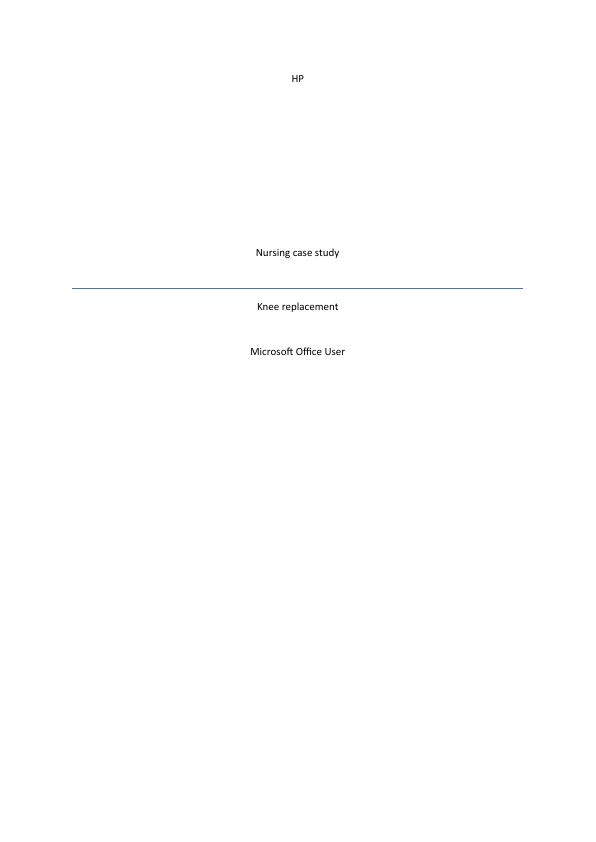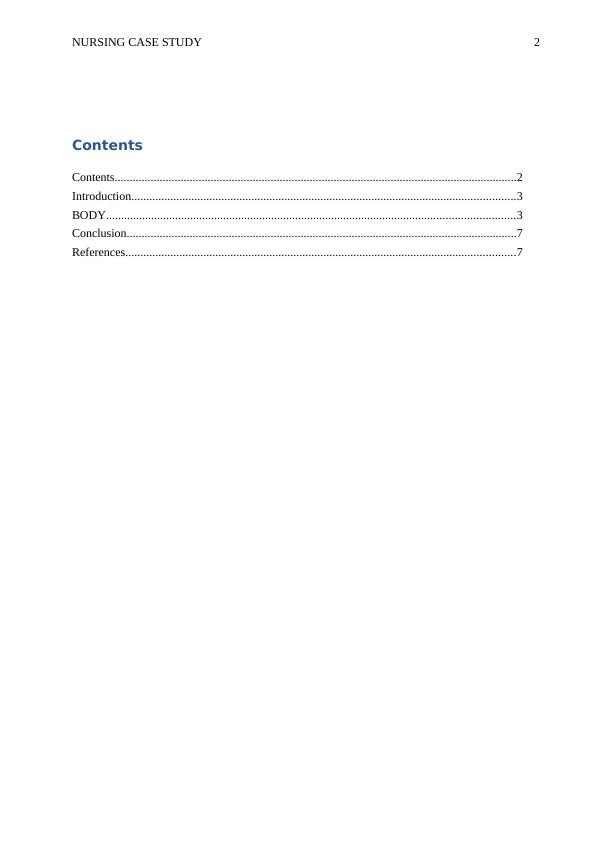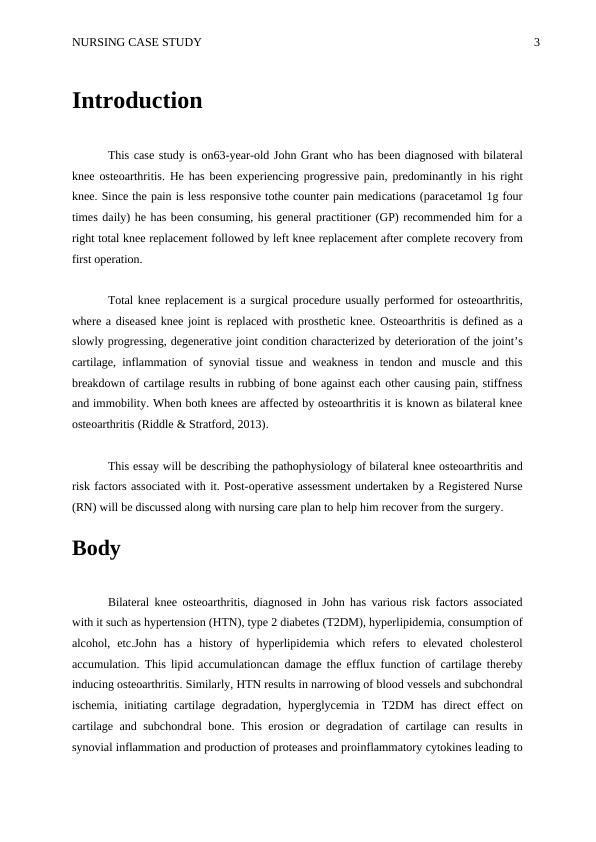Nursing Case Study on Bilateral Knee Osteoarthritis
Added on 2023-01-16
9 Pages2446 Words81 Views
End of preview
Want to access all the pages? Upload your documents or become a member.
Acute Care Nursing: Pain Assessment and Wound Care in Knee Replacement Surgery
|11
|2240
|333
Bilateral Knee Osteoarthritis: Pathophysiology, Treatment, and Nursing Interventions
|11
|2314
|26
Nursing Assignment: Case Study of Bilateral Knee Osteoarthritis
|10
|2715
|396
Clinical Case Study on Total Knee Replacement
|6
|1647
|191
Nursing Assignment: Risk Factors and Management for Falls and Pressure Injuries
|7
|1860
|46
Post-Operative Wound Dehiscence: Risk Factors, Assessment, and Nursing Priorities
|8
|2251
|1


